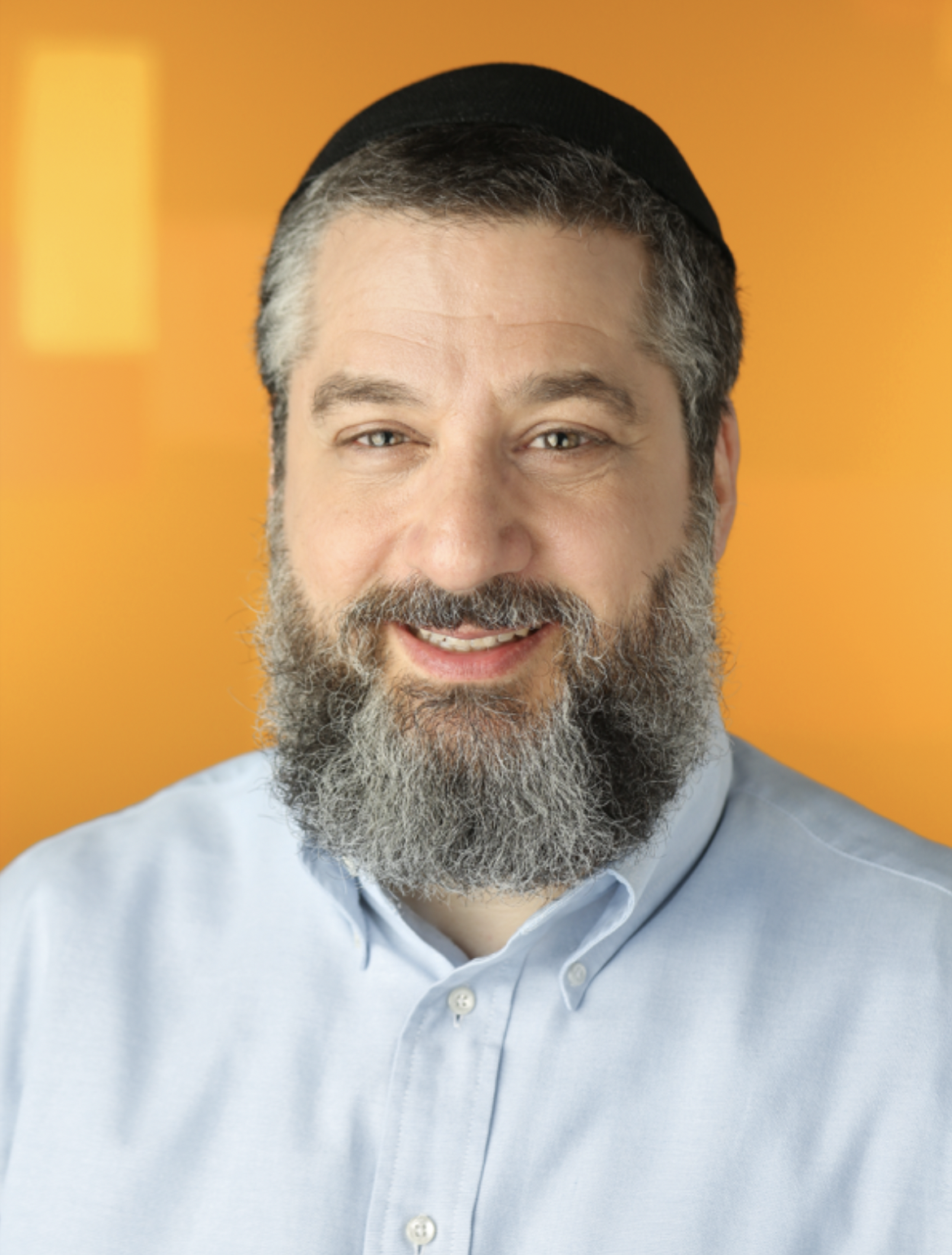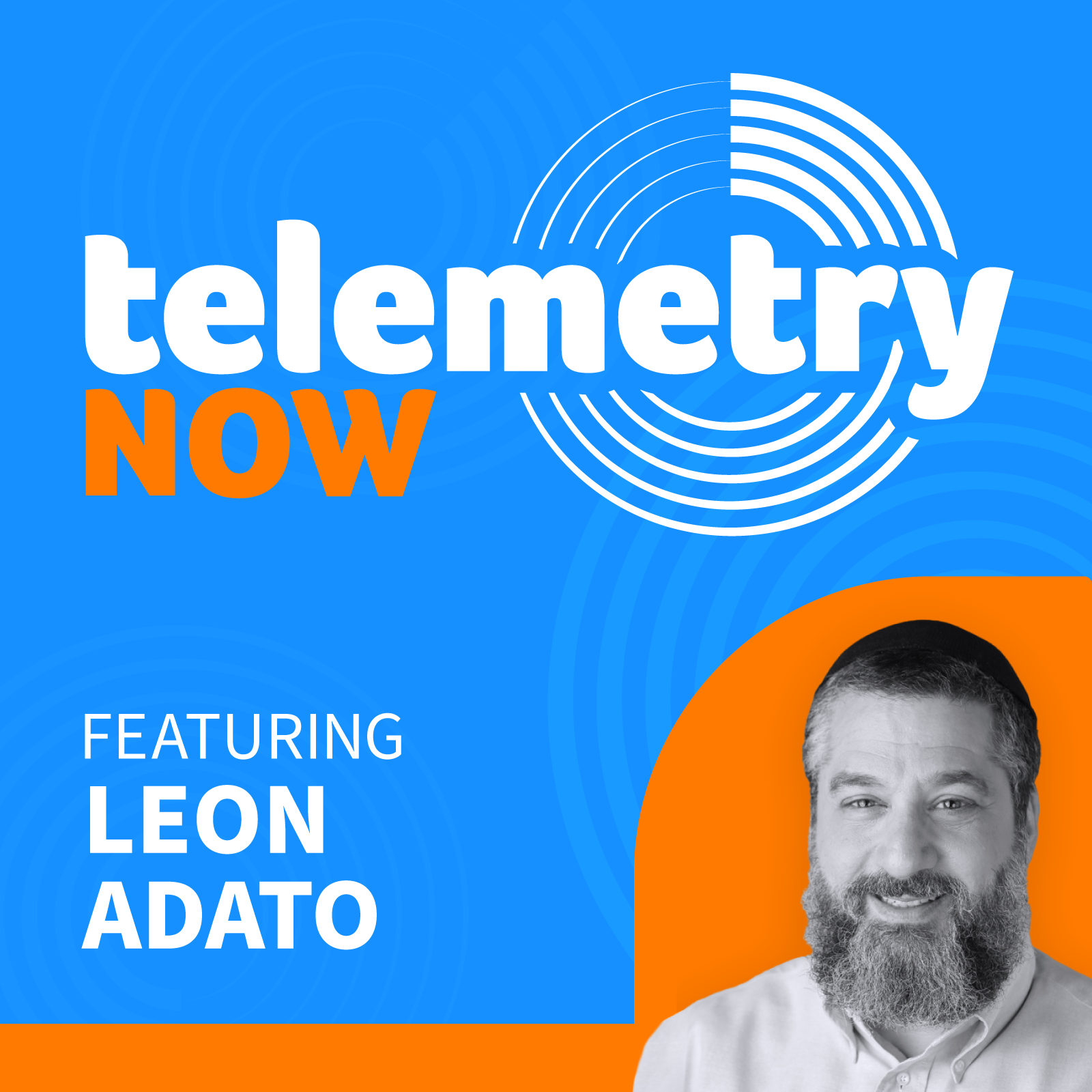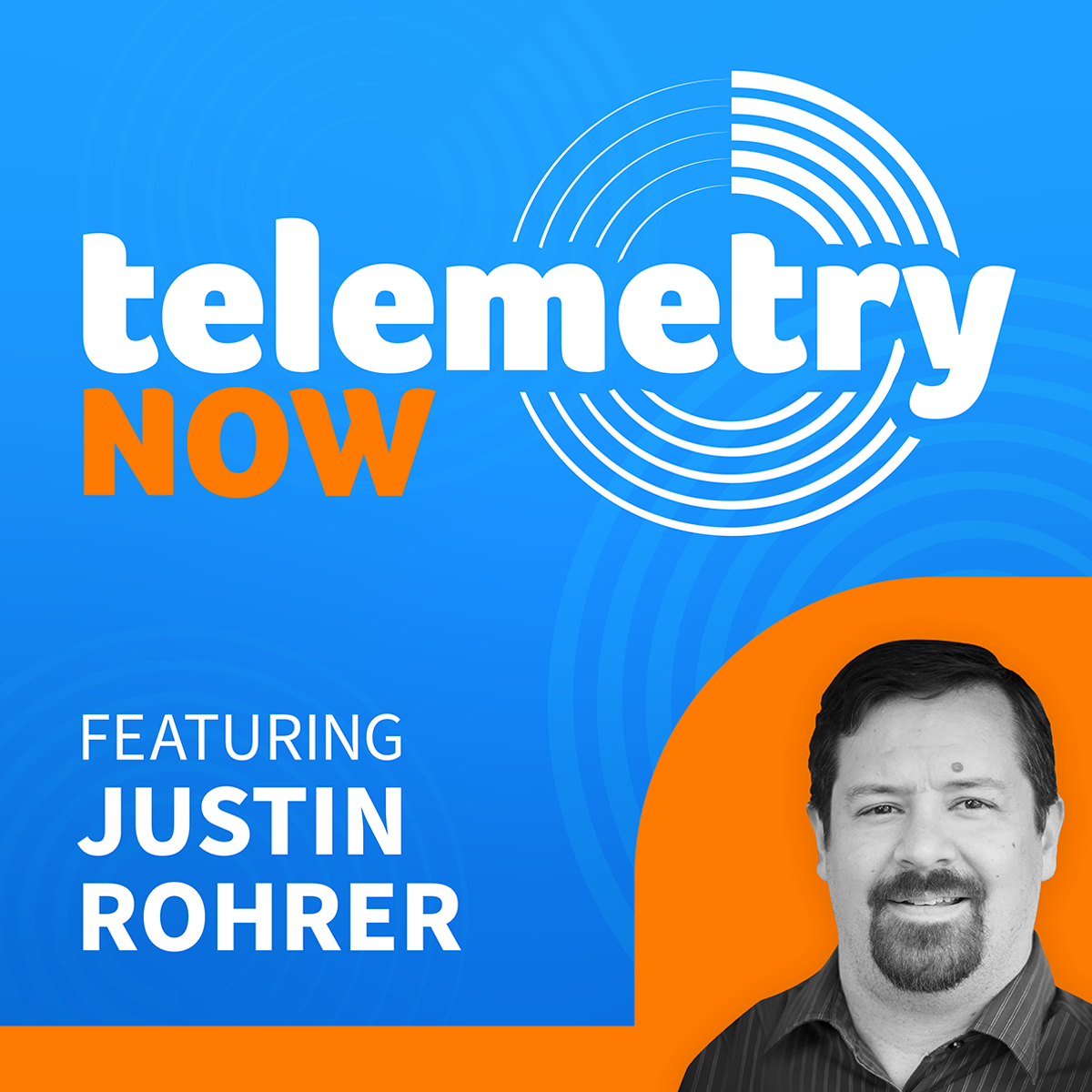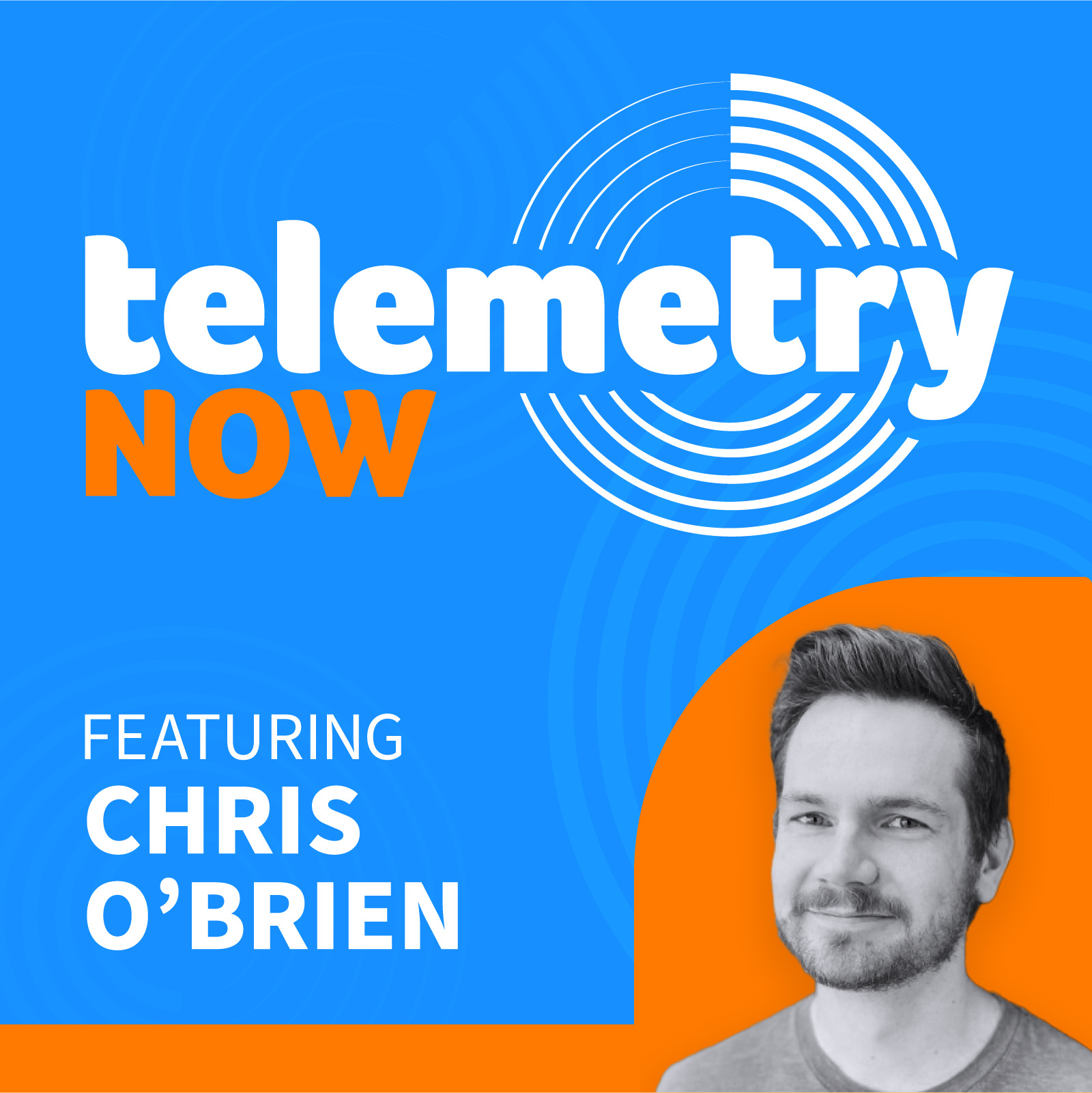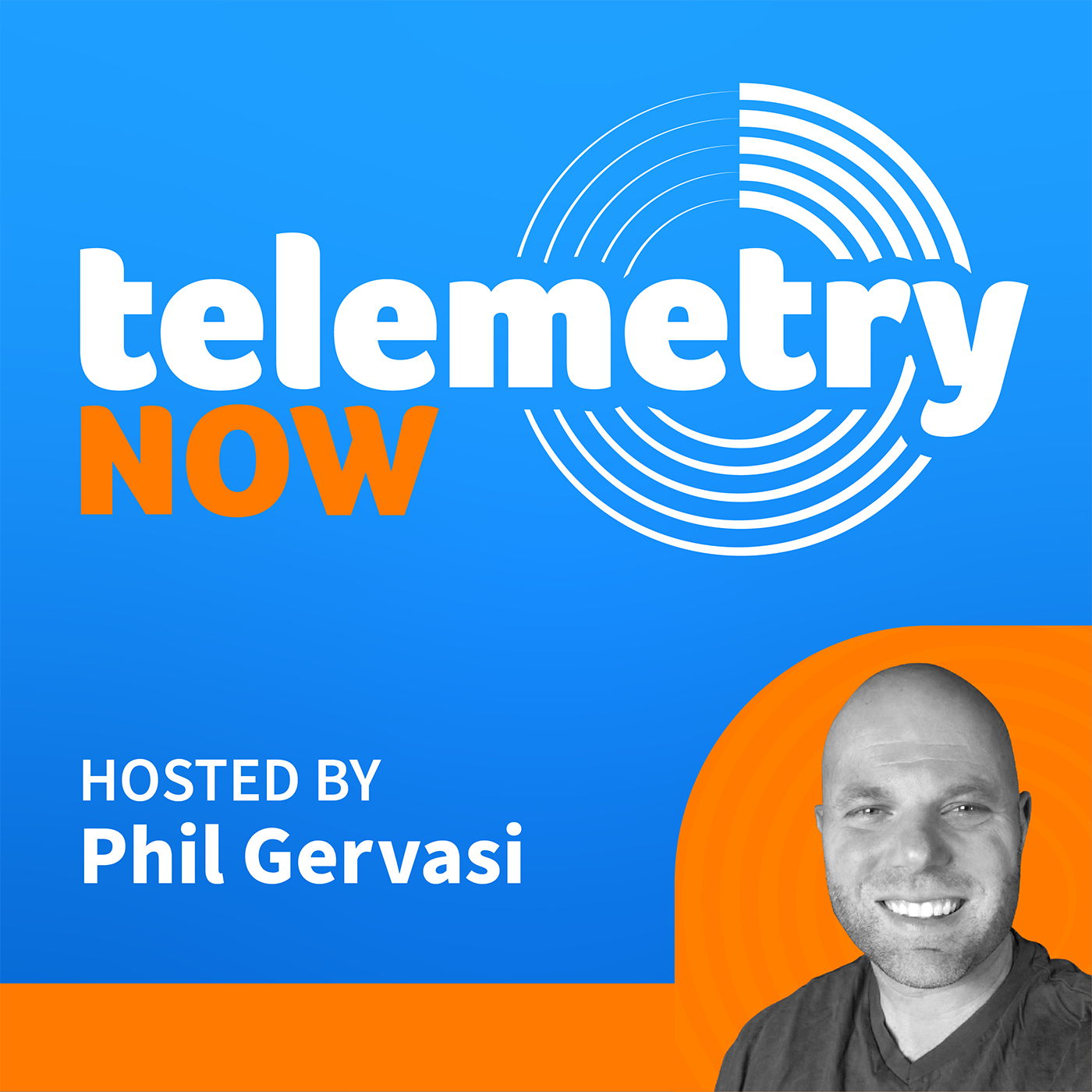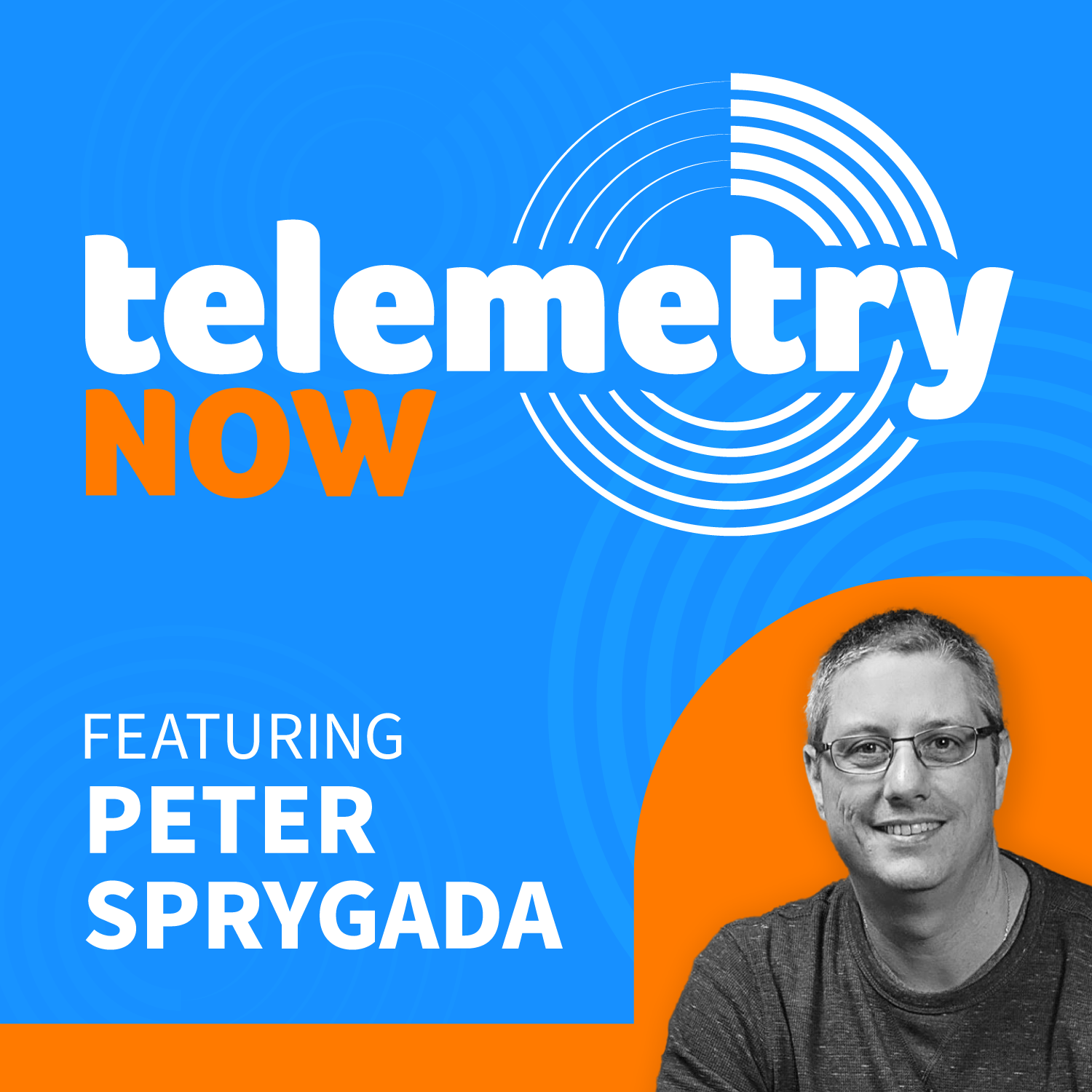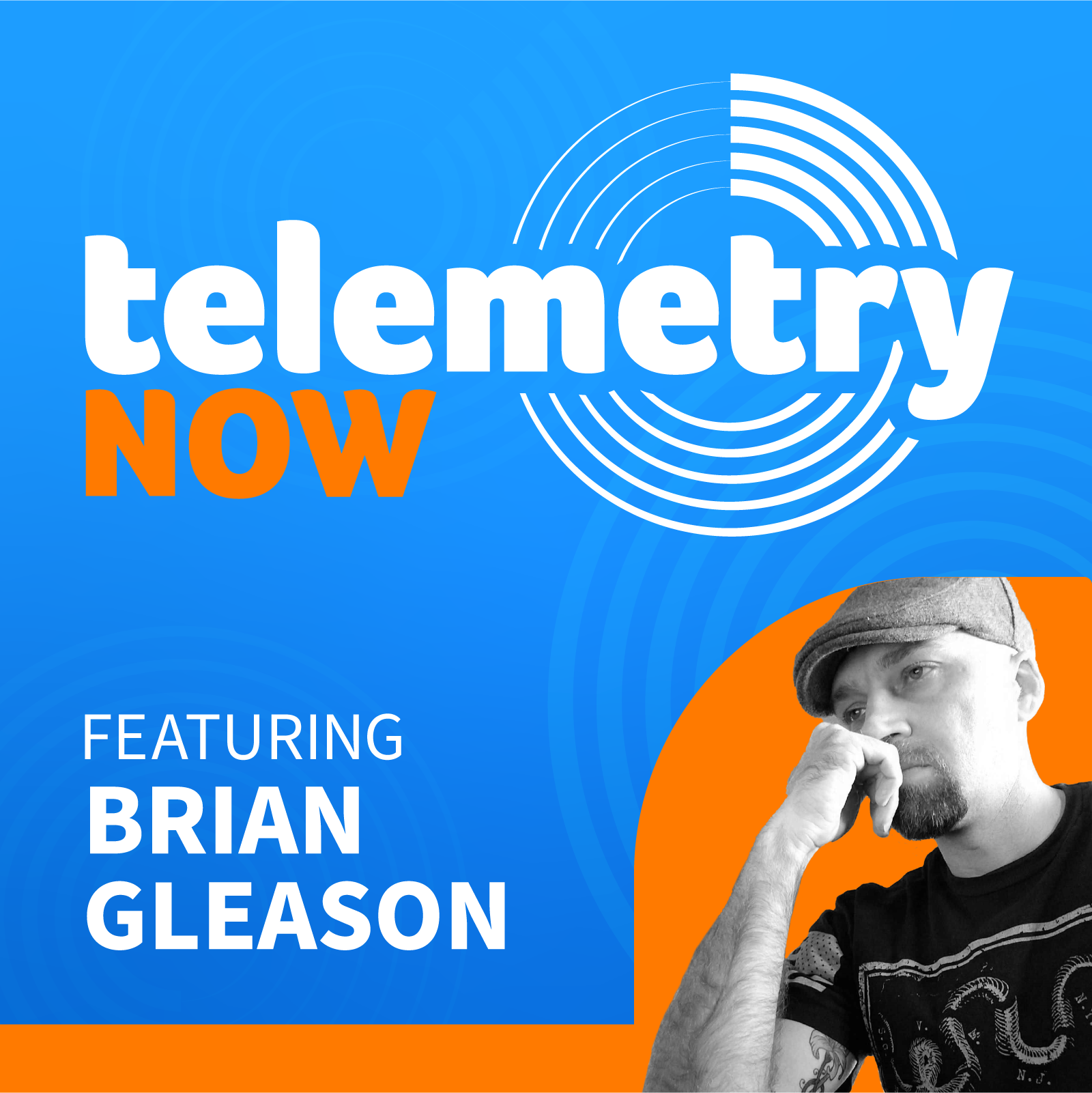Are generative AI and LLMs the future of SDN?
- 0.5
- 1
- 1.25
- 1.5
- 1.75
- 2
Phillip Gervasi: Hey, do you remember SDN? No, I'm being serious. Software- defined networking. That was pretty much every other blog post and podcast five years ago, and I can't remember the last time that I heard someone talk about it since then. So what happened? I mean, is SDN still a thing? Was it just so successful that we don't need to talk about it anymore? Yeah, I know I'm being ridiculous, but seriously, what's going on with SDN these days? Joining me today is my new friend, Leon Adato, fellow technical evangelist with me here at Kentik, a technologist with years and years of experience in networking and specifically network visibility. And today, that's what we're going to talk about, kind of. I mean, we don't really know the exact answer of what the deal is with SDN, but we have some ideas. My name is Phillip Gervasi, and this is Telemetry Now. Hey, Leon. Welcome. It's really great to have you. And welcome to Kentik. It's been a few weeks now, I think, right?
Leon Adato: Yeah. It's been a few weeks, but I say that I've been here for about 12 minutes, maybe 13 at this point. But yeah, it is amazing to be here. I've known a lot of folks at Kentik for a while and been pining to be part of the team, and they finally let me sit with the cool kids at the lunch table.
Phillip Gervasi: With the cool kids at the lunch table, which brings back to my memory all sorts of'80s movies of teenage angst and all that fun stuff.
Leon Adato: Yeah. Yeah. As is want, right? I mean, isn't that the mode of the days is going back to the'80s? All the movies and everything.
Phillip Gervasi: It really is. Our family movie night the other night was Ghostbusters. My son didn't watch it. He's only nine, and so he was in bed, but my daughters are older. So we watched Ghostbusters, that was a lot of fun. My wife loves Molly Ringwald movies. We love'80s music. We listened to a lot of Journey and Peter Gabriel in my house. I like other stuff too, don't get me wrong. I'm a product of the'90s more, of the early'90s. I was in the throes of high school when Nirvana washed up from the shores of Puget Sound and took over the world. It was a lot of fun.
Leon Adato: Wow. So I'm about 10 years ahead or behind or however you want to do time, wibbly- wobbly, timey- whiny stuff. But yeah, the'80s were about me. All those movies that you named were happening while I was in it.
Phillip Gervasi: Yeah. Loved it. I love it. I love it very much. I don't know what's going on today. You know what? I sound like such an old curmudgeon as the words are coming out of my mouth. " I don't know what's going on today with these kids."
Phillip Gervasi: But
Phillip Gervasi: I watch my daughter, and my son to a lesser extent, and I look at them and I'm like... My oldest daughter, who's almost 17, she's starting to wear Doc Martins again. She loves the Smashing Pumpkins. She wears flannels now. And my middle daughter, a little bit less so, but similar. And I'm looking at them like, " You guys think I'm an old guy, but my generation invented the stuff that apparently you think is the coolest stuff out there," so here we are.
Leon Adato: I will tell you that when I was younger, I was pre- teen in the 70's, Happy Days was all the rage. And I heard the same thing. My parents and their friends were like, " You think you invented all of this stuff?" It was all coming back. Everybody wanted to be Fonzie. So I think it's just cyclical. I think that vintage is just 25 years behind whatever you are as a teenager.
Phillip Gervasi: I agree. In fact, I'll share this another time when we have maybe a podcast episode dedicated specifically on music trends. But I have a theory that breaks down now in the age of the internet, but I have a theory about popular music. I want to talk about it with you one day. I'm going to leave it as a cliffhanger for our audience. One day, I'm going to do a podcast about it. Yeah, right. I did share it internally with our team and a couple of people, they were very quick to find all the holes in my logic, so that made me feel sad.
Leon Adato: Which makes it more fun.
Phillip Gervasi: Yeah, that's true. So you are a technical evangelist with Kentik, as am I. But is that what you have been doing for your career or has there been a journey and a progression to what you're doing now that you'd like to share?
Leon Adato: There's always a journey. And I am a man of a particular age. I mean, I've basically dated myself at this point. I'm at the point in my career where I find that my goal is to use all the privilege that I have and open doors and shove other people through it. When I'm talking to folks, I remind them that everything that we are doing is sort of a journey. There's no, " Oh, and I was born that way," or, " I learned this and that's the way I stayed for the rest of my career." None of those things are ever true. So actually, going all the way back, my degree is in theater because in 1985, when I started college, the internet was certainly not a thing and computers were barely a thing. And when I got out of college, to work in tech, the two things you needed were breathing and a suit, and one was actually optional. So I got into computers when you could get Windows for free on 12 five and a quarter inch floppies, and you got it for free because it came with Excel 1. 0, which nobody ever used because everyone was still using Lotus 1- 2- 3.
Phillip Gervasi: I remember.
Leon Adato: So that was where I started. And I actually started doing training because effectively, computer training is nothing but standup. It's just a little bit more specific than a standup routine, and it fed that theater urge in my soul. And I worked my way up the IT food chain from training to desktop support to CIS admin and sort of stepped sideways into network engineering. And then I got involved, about 25 years ago, with monitoring automation and systems management, which was fairly new at the time, and I've never looked back. I've been building, maintaining, tweaking, monitoring systems using all kinds of software, everything from Tivoli and OpenView and janky Pearl scripts, which is really Tivoli all over again, all the way up through Grafana and Zabbix and janky Python scripts, and stuff like that. And of course, Kentik. So that's my journey in sort of a very tight nutshell. It's my IT superhero origin story. I was dropped in a vat of floppy discs as a baby.
Phillip Gervasi: So when you said theater, of course, what immediately came to mind was Jonn Lovitz when he's like, " Acting." Yeah, I don't know if that's accurate or not, but that's what came to my mind. So here we are. And today, I spoke to Christoph Pfister. He's the chief product officer at Kentik. We did a LinkedIn live. And it's already out, so if you're listening to this podcast right now, you can still go back and listen to that or watch that, because it is video, and check out what he has to say. Because what he was talking about and what we talked about together, it was specifically the role of generative AI. Generative, not general. Generative AI and large language models in IT operations. Now we did focus a little bit more on networking than anything else because we are a networking- focused company, but IT operations in general as well. But it got me thinking, and then I brought it up to you, this really feels, it smells, it has this flavor of what I always thought SDN, software- defined networking, was always supposed to be. And then I started thinking, " We don't talk about SDN anymore." That was 10 years ago. There's a few years where every single blog, every single video, every single podcast was about SDN and then end. Done. There was all this vaporware stuff and marketecture and thought- leaderish kind of stuff, thought leadery kind of stuff, and then we stopped hearing about it. But it's always been in my mind, and we have these manifestations of SD-WAN. SDN. SD-WAN, actually, that was a Freudian slip because SD-WAN, I think, is an actual manifestation of SDN that we can point to. Anyway. I really feel like this is kind of now coming into fruition where we're talking about this software overlay to physical and virtual infrastructure and configuration, all these things where human beings are interfacing with it in a very different way, and it's really exciting to me. But anyway, that's what we were talking about. I wanted to get your take on it because I know you have strong opinions about, well, everything, but in this specifically strong opinions about the marketecture and smoke and mirrors surrounding gen AI and large language models.
Leon Adato: Yeah. I think that SDN, the concept, the movie, the book, the sequel, I think the concept of SDN was really exciting for a lot of us as much as it never really came to fruition. But even things as simple as having a tool that would configure your network infrastructure, like pre- provision, your network infrastructure, and then when it saw where it was, it saw its IP address or it saw the VLAN, it was part of, would automatically start to put more configurations into play automatically and being able to respond to the circumstances on the network and update the configuration based on that, maybe we're going to reroute traffic this way or this kind of traffic this way or whatever it is. That was the promise of SDN. And it very quickly proved itself to be way more complicated than anybody wanted it to be. And I think that's one of the reasons why people backed away from it, but the promise of it, and we could see the seeds of it because we have tools that will pre- provision, that will keep a whole bunch of code snippets and just throw them on boxes. And we have things that will respond to a monitoring event, " Oh, we saw traffic spiking of this. We saw this kind of flow going in this direction, and let me throw a different configuration on there." We can imagine it, but it doesn't quite go there. So yeah, I think that the idea of SDN was really brilliant. And in the talk with Christophe, you even said, " I'm going to steal your movie analogy." You quoted Star Trek and you quoted the point where Scotty was sitting down with a modern day, which was I think an Apple IIci in the movie or something like that, just this beige box kind of thing. And he goes to talk to the computer and it doesn't respond, and the person picks up a mouse and says, " You have to use this." And so he rolls the mouse overlooking at the roller ball and says, " Computer," and we all in the audience bust it up because that's not how that works. But you had said during your talk with Christophe that that's how you felt the computers ought to interact. And SDN was an aspect of that. Look at my current circumstances and help me come to a resolution, help me get to a finished product of some kind. And that's what people are seeing with generative AI now. I mean Chat Gippity... And yes, I insist on calling it Chat Gippity. Thank you Corey Quinn. Really that's its promise is that I can give it a couple of sentences, " I want you to do blah, blah, blah, blah, blah, blah, blah." And it will make a good attempt at trying to do that. So I think that's where we start, right? Is-
Phillip Gervasi: I think SDN software- defined networking was just so ambiguous that it met very little, and so therefore, it was just this nebulous thing that we couldn't nail down. Is this SDN or is this SDN? What about this product? And so it just remained in the realm of smoke and mirrors and marketecture and vaporware, all that stuff because it was that nebulous, ambiguous thing that nobody could pin down. Nevertheless, this idea of software adding abstraction layers between human beings and the network, the underlying network and infrastructure, well, that's kind of always been there, right? Isn't a VLAN a software defined element? I mean, it's a logical element, not a physical box thing that we can touch. And so I think that it started to die down as a term that was popular to use. I've always found that the thought leader circles would be talking about things that were maybe three, five, even seven years ahead of where the industry was. And so maybe this one was just a little delayed, and so 10 years that we're talking about SDN, and now it's finally coming to fruition. So maybe that's what it is. But there were, and are, I think, very palpable manifestations of these software abstraction layers in between a human and underlying hardware like SD-WAN and like other control plane platforms, whether they be homegrown kind of things or some vendor creating a control plane mechanism to manage an entire data center or whatever it happens to be. And then of course, we had network automation become very, very ubiquitous where at one point it was just relegated to hipster networking. Now everybody's doing it in the sense that you can ingest all this information into your IPAM and into your CRM and all these things and then call on those and your Python scripts and Ansible playbooks to do certain things, to pre- provision devices, to elicit some kind of a configuration push when some kind of inaudible. So we can do that stuff. I just think it's become less cool to talk about because we're starting to see those manifestations. And I think that what we're seeing now with the application of generative AI, large language models in the realm of IT operations is another manifestation of that. And a very, very cool one. And thank you for bringing up that Star Trek scene, it's one of my favorites. I love it. I've made a couple of memes of that one in particular, but I will also allude to Star Trek the Next Generation because I've always wanted to... Well, not as much anymore because I'm not a network operator, but when I was, I always wanted to be able to talk to the network like Jordy talked to... Excuse me, Lieutenant Commander Jordy Forge, give her where it's due. I've wanted to be able to talk to the network in that natural way. He spoke to the enterprise, to the enterprise computer. And so that's what CP talked a lot about today. He talked about the natural language query, which is based on the concept of natural language processing, which is kind of the umbrella over large language models. And it's basically providing an interface between you and me as human beings and data. Not looking at commander data, but actual data set.
Leon Adato: Also in AI.
Phillip Gervasi: And then being able to query it, which is where we get NLQ, but ultimately leading toward other cool things like automated remediation and automated root cause analysis and that sort of thing.
Leon Adato: I think what you've just done is interpreted the current technology, again, LLM and generative AI through the lens of the work that you do. And I think lots of people are doing that. What's interesting is that you are finding this LLM, again, Chat Gippity bolt on, you're finding it in Salesforce, you're finding it being built into Okta. You're finding it being built into washing machines. I've seen that and certainly monitoring and observability tools. That's happening because I think lots of people, and then you look at GitHub copilot, which is another generative AI that helps code complete, and I've seen a few of my Capital D developer friends, I'm a script kitty basically, which is an insult to scripts and kitties everywhere, but I have friends who are real developers and watching them using Copilot, it's reading the code base, their actual code base and making assumptions about what function they're about to throw in there, how they're going to implement that function, the pattern they're going to use. I mean, it's making some really interesting and complex assumptions and then helping them code complete. And that's from a developer standpoint. So of course the potential is there. The thing that strikes me though is on the... Now it's less so today than it was three months ago, but three months ago when Chat Gippity was really, really the new hotness and nobody knew what was happening, people were sort of losing their ever- loving mind because, " Everybody who writes is going to be out of a job, and everybody who does essays in school is going to be using this and will have no way of knowing if it's plagiarism and whatever." I'm not saying those risks were unfounded, but I think that they were overblown in the same way and, again, I'm going to date myself. When I was in elementary school, pocket calculators first came out, and in fact, late elementary school, early junior high is when Casio made its first watch that had teeny tiny, itty bitty buttons for a calculator on the watch, and schools were losing their ever loving mind. " Nobody's ever going to learn how to do math again. Nobody's going to learn how to calculate. They're just going to put it on the calculator and that's it." And of course, that never happened because you still have to know how to math to use the calculator. If I'm balancing my checkbook and I'm using the square root function, something is horribly, horribly wrong. And it's probably not that my finances are very complicated, it's probably that I don't know how to math particularly well. So what the calculator ended up proving was that it allows somebody like me who is not consistent in their math abilities to be more consistent, and I see generative AI doing the same thing, but the problem is you have to know what you're doing in the first place and taking-
Phillip Gervasi: Oh, yeah. Absolutely.
Leon Adato: Yeah. Taking it back to the network thing, if I use NLQ Natural Language Query and I say, " I'd like you to show me all of my layer two switches that have high CPU and are causing routes to collapse," which I know is not a thing, I'm just making up words, right? I'm basically being chat GPT right now, but I have to have a sense that the sentence I said is utter hogwash. I will use that word in lieu of something stronger. And also, even if I phrase something correctly, " Oh, I want to know all the routers that have high CPU and are in spinlock." I have to be able to look at the results and understand whether I actually got back what I asked for. None of the labor saving of NLQ of the LLM has done anything to reduce the onus on me to be a decent IT professional. What it might do though is help somebody who's a little bit newer ask a question that they understand the question but won't know how to phrase it correct particularly well and help them bridge that gap. That's what I see.
Phillip Gervasi: Or who don't necessarily know how to get the answer. Because that's ultimately, the real thing here is that the whole point is augmenting an engineer, not replacing an engineer. And so there's an incredible amount of domain knowledge that's required for you to prompt the platform correctly and properly so that you don't get a ridiculous answer. I mean, you want to know why is Microsoft 365 slow in my Chicago office on the second floor of the building? That's very broad, so you don't need it. But to be able to understand the answer when it starts to talk about or experiencing latency on this hop with this particular provider, here are the IP addresses or something like that, right? It requires a lot of domain knowledge, both to prompt correctly and to understand the answer correctly. What it's really doing is, again, it's an interface between a human being and the dataset. And so that presupposes knowledge of the dataset, not a knowledge of knowing all of the data, but understanding the forms and types of data and then allowing the machine to do something that we can do technically, but just dramatically faster, dramatically faster. And so if you can afford a team of 20 PhDs from MIT, maybe they could do what an LLM and an LQ and all these things can do for you in a few weeks or months or I don't know. And they're identifying correlation in saying the correlation coefficient with these two things here, or is this, and we think that swinging peers from data center A to data center B is causing latency over here with this application. So they can start to figure that out. But honestly, a lot of engineers can as well. It just takes an inordinate amount of time. And so what we're doing is we're using this approach to reduce MTTR. That's always the case, right? Reduce the meantime to resolution by augmenting a very operational practice by making something that's very manual, clue chaining, troubleshooting, whatever you want to call it, programmatic. So that's the stuff that we're doing already right now, and we're doing it with a small subset of our customers who want to try this out, training the model and fine tune it for accuracy. Cool. That's cool enough. That is true. But I am really excited about the things where we start to use the tool to identify correlation, to derive insight that would be near impossible for a human to do because of the vast volume and diversity.
Leon Adato: Right. And what you're doing now is you're calling out two things. You're calling out the ease of use, again, that natural language interface along with the data, but they go together, right? The whole point of observability versus monitoring, right? This is part of a lot of conversations I have is are you old school monitoring? Are you the new fancy, new fangled observability? At which point, charity majors head explodes and everything like that because everybody is defining observability as completely different things. But observability writ large tends to be interested in large disparate data sets and digging through things that a human cannot reason about in any way because there's just so much data in so many different directions. And so on the one hand, you have an observability system, something that can take that large data and, again, slice it, pivot it, and reason about it, and then you're putting the LLM, the large language model interface in front of it so that you can ask questions without having to do Prom QL or some sort of customized query language. And that can be incredibly powerful. But I want to make sure everybody who's listening recognizes that we are talking about two major things. One is the data itself and the engine on top of the data that can reason about it, that can deal with that much data and slice it and dice it, and then the language model on top of it. And what we're getting to also is, I've heard this term a few times now, prompt engineer, which I love. I would be terrified if it became an actual job, but I think as a skillset, prompt engineer, meaning somebody who understands LLM interfaces enough to write better prompts sooner so that you bring down the cycle time on asking a question of the LLM and getting the correct or the accurate or the desired response back. Because one of the things I see all the time, I watch YouTube videos or whatever about, " I typed this query in and it wrote my entire 2000 line program for me. Ha ha." And I'm thinking about that scene from the movie Sully, where they've shown him the pilots who executed the maneuver to go back to LaGuardia, and he just leans into the microphone and he says, " How many times?" And everyone's like, " What do you mean?" And he says, " How many times did they have to practice that before the one that you just filmed?" And the answer was 17. They had to practice the maneuver 17 times before they finally got it right and filmed it. And I see that with people interacting with Chat Gippity or any of the other LLM system, is that the first question never gets you what you want. You've got, " Oh, no, no, not like that. I need you to do it like this." " Okay, yeah. But I need it to be shorter. I need to be..." And finally, by the fifth, seventh, 10th, 20th iteration, you finally know how to ask the question the right way to get it. To quote a different movie, because apparently that's what we're doing, from the Lego movie, Batman, when he's like, " Got it the first time," after he's thrown the batarang 52 more times. " First time." Okay. All right, fine. Always post your Ws.
Phillip Gervasi: But it is an entire ecosystem of technology, right? So we've been focused on Chat GPT, Chat Gippity, we've been focused on large language models in generative AI because that's top of mind since we talked about it today in that LinkedIn live. But in the greater context of SDN, what its promises were a decade ago and what's going on today, we are talking about utilizing all of these technologies to get us yet to the next step. It's iterative like anything else. And so you mentioned, we're talking about LLMs, but an LLM is not going to graph out my OSPF database. For me, it's going to be the interface with regard to language and predicting words and then maybe summarizing because things like that. And then it's going to require those other technologies, whether they be plugins like now DALL- E's a Plugin for chat GPT, but it could be any kind of plugins, network centric plugins, IT operations plugins, whatever. So that way the natural language processor is actually the interface between us and then yet other technology that is then going and interfacing with the data. But ultimately, that's it. That's the whole software- defined abstraction piece. And right now we're talking about deriving information, right? Or identifying correlation maybe or seeing patterns. And that's all really, really cool. That's kind of a cornerstone of observability for operations for it to then even produce within the realm of probability or a confidence level, here's the solution. And then the next step after that, just things automatically resolving themselves through this entire workflow of many, many different topics. That's very compelling. That's obviously very far off, but you could see the beginnings of that all happening here.
Leon Adato: Yeah. The thing I wonder about, and I'm going to ask you about is whether anyone will get to or be comfortable getting to a point where the system, again, the data sitting on top of an engine that can reason about the engine, sitting on top of a language model where anybody would be comfortable with it basically autonomously dealing with everything. I think that traffic routing is fairly simple enough, and every CCIE listening to this is laughing their head off right now, " Oh, yeah. Sure, it's simple. Yeah, Leon, whatever. You got your CCNA in 2004." But I think that routing traffic, looking at traffic patterns and making some changes is one thing. But I know people who refuse to implement alerts like automation in their alerts because they're not comfortable that the problem is predictable enough to even respond with automation to relatively simple problems like just interface configuration things and things like that. So I wonder whether our comfort level for autonomous reaction will ever increase to the point where we would actually let it drive unattended.
Phillip Gervasi: Yeah. I think so. I do. And I bet there are a lot of people that disagree with me. I've had that conversation many times both when I was a practitioner and then afterward when I was working for vendors. But I know some colleagues of mine that are still practitioners and then customers of ours that say that the network will fix itself. Yeah. That's great. Do it. So this idea that I want the alert, I want the suggested remediation. That's awesome. By the way, if we stop right there, that's still a gigantic step forward. So it's not like I'm knocking. And I want that, but then I want the button to be able to say, now push the configuration so I can review and do everything. Maybe I can incorporate it into a change management workflow and submit it to a cab meeting or something like that. And so that is true, but I do know enough, especially in smaller enterprises. So let's say a large school district where you have a small team of IT folks and maybe one network expert, one person who's managing all the windows or desktops, whatever. You've got a team of 10 people, which sounds like a tiny little organization, but it might be 15,000 people in this school district. So in an organization like that, " Oh, it's not mission- critical because it's this." Or, " It's not ecommerce, it's not fancy." And it's like, oh, really? How about connectivity to all the school buses that have a LTE modem on the bus and they're sending metrics and GPS back to the main office, and then there's police and municipal services involved. That's not mission- critical to you? The lives of the 50 kids on that bus, come on. Yeah. And the two cops that are down in the main office, they have an office in the office. I mean, you see this stuff. And so I think in an organization like that, yeah, you say, " Hey, this platform will automatically fix this." These switch ports will automatically get reconfigured, or we'll reroute this thing. Maybe we reserve certain things for I need approval. But I absolutely think that there are engineers that would jump all over that. I would. I get it, there's a trust relationship. But I think that with actual practitioners save certain very mission critical, very sophisticated environments, I think there would be mass adoption very quickly.
Leon Adato: And I think one of the key things to that is accountability within the system. Meaning it's one thing to say, " My monitoring is collecting all this telemetry and then it's digesting it, and the language model is looking into it and all of that stuff, and then it's making changes." But can I do a time machine effect? Can I roll back and say, " All right. The network looked like this and then this thing happened and then this change was implemented. As long as I can go back and review it and say, " Oh, I see the assumption the system made. I see why it did that thing." I think that I'm comfortable enough to know, oh, I fed it, I fed it wrong assumptions, I fed it not enough parameters. I didn't set a threshold high enough to say when this happens, " There's my circuit breaker pattern or something." I think that's a key aspect of it. I mean, I realize that we are designing product as we talk on this podcast, and it's really easy, actually. I've never coded as well as I am doing right now. I think as long as you have that accountability within the system, a lot more people would be comfortable with it. It's when I don't know what happened and I don't know why and I can't look back. That's where I think people are afraid things might go because we can't... When I use DALL- E, when I use Chat Gippity, when I use those things, I can't see what's happening under the hood. And I think the people worry that that's going to be the default experience behind, I can't see why, what was it? Temperature. Christophe in the LinkedIn live was talking about temperature to figure out the next word and the threshold to figure out the next word. And if I can't see the temperature settings, if I can't see why it decided to use the word manhole cover instead of hamster, instead of sandwich, I don't understand why it's doing this and I can't trust it.
Phillip Gervasi: Yeah, yeah. And you can't interact with it anymore because you don't know how to elicit the response that you want. And when you say trust, we're talking about a matter of accuracy and confidence that it's going to do the right thing or push the right config and solve the problem. But we kind of do that already, don't we? I mean, SD-WAN will reroute traffic for you without you telling it to. It does it automatically based on whatever metrics and whatever it's using to test the quality of various links. And sometimes it's not just the links, but entire paths between sources and destination, and then it reroutes traffic. We have other technologies that we use that are similar in the security field. We'll shut down an interface if there's thresholds, whether they're dynamically created thresholds by pattern recognition and by baselining. So that's kind of statistical analysis and some basic ML stuff. So we do that there. Granted, it's not reconfiguring data center, but it is an action of pushing a config, shutting down an interface or something like that. One of the tenets of intent- based networking, was to be able to use a certain type of more natural language to tell the system that this is what the intent of this configuration of this network is supposed to be, a reference to architecture, if you will. And then if there's any deviation, the network will heal itself. So we're already moving in this direction. And that's why I really do believe that engineers out there would be quick to adopt something that actually does push config, and there is a trust relationship. And I think very quickly you're going to see that if there's a problem, if that trust is broken, nobody's going to buy the product and you're not going to see it as a common platform deployed in all the enterprises around the world. So there is that market control, I think. But I don't know. Do you think that that's what SDN software- defined networking is all about? It's been a long time since we heard anything about it. Maybe we should start writing some blogs about it again. In this-
Leon Adato: Right. Well, I mean, again, I think SDN failed to define itself clearly enough to avoid being marketed to death. And so it became anything that anybody wanted it to be, it became anything the marketers wanted it to be, and therefore technologists stayed away in droves. I think that if somebody put a stake in the ground and said, " This is SDN." Even if this is company X brand SDN. All rights reserved, trademark, I think that that would help it practitioners feel more comfortable that they were getting what they thought they were getting. To your point about SD- WAN working, I think that there's a relatively small segment of the IT practitioner space, let alone the network engineer space that deals with SD-WAN on a regular basis. So it's somewhat invisible. I also know that whenever anything automatic happened, look, I've had websites that have ended up on blacklists for email spam accidentally or whatever. And I know that when something is misconfigured incorrectly, when it's misconfigured and I personally feel wronged by it. People get upset really, really fast and they're up in arms about it. And I think that if you have, again, a monitoring and observability system that is feeding into your network configuration, the opportunity for a mistake to destroy all trust is really large. And I think that SD-WAN is unique enough and limited enough. Limited in terms of the audience. I would argue that the CTO might know that SD-WAN is happening in their organization, but it may not even know who's responsible for it, let alone where it happens, or which devices or any of that stuff. I think there's a small cadre of people who understand it enough to do anything with it, and everyone else may point to it, say, "Look, we have SD-WAN, it's amazing. I don't know why."
Phillip Gervasi: I do think that SD-WAN in particular is a outgrowth of one of the definitions of SDN. The disaggregation of the control plane in the device. And so now you have your control plane. Well, I mean, there is a control plane that's distributed, so the devices can make local decisions in hardware, but then you have your central brain, which is some SD- WAN controller in your data center or in the cloud. And so there is policy that's pushed from there. And so there's a lot of benefits. So I think SD-WAN specifically falls under that sort of definition of SDN where a lot of folks were harping on that one definition, the disaggregation of the software and the hardware, the control plane and the data plane, that kind of thing. And you saw that happening at the switch level. You saw that happening now here at the router, the WAN, right? You started to see that at the campus level with certain vendors that had entire overlays built on VXLAN and DNS and things like that. But that's just one sliver. And so that's why, again, it was an ambiguous, nebulous term we weren't able to pin down. So I completely agree with you there, but I have to say, it still makes me wonder sometimes now that I hear LLMs and generative AI all the time, if that's also likewise just a term that the marketing folks use and that the practitioners roll their eyes at and it's going to disappear. But that thought is in my head, but I don't know, Leon. I think maybe... I mean, we're just seeing too many real practical benefits. In the rest of the world too. But specifically in technology, for me to say it's just marketecture inaudible.
Leon Adato: I've watched SOA and, oh God, so many different standards and ideas that took the marketing space in it by storm and then just fell away because nobody backed it up or nobody could define it or whatever and I think SDN fell prey to that. But you're right, there's already been the AI winter, so we've already been through that. And so now we're looking at an actual implementation of AI. So I think it's going to turn into something, whether it remains what we see today is entirely a different question, but I think it's going to end up being something fairly useful, but it is going to progress like everything does around here. And we'll be here another five years saying, " Remember when we were talking about... I think I called it Chat Gippity back at the time because I thought I was being witty and it was actually just really tired and old." But I mean, we'll be rehashing it. It'll morphed into something else.
Phillip Gervasi: Yep, yep. But I do think that this is another step forward in that. Though I called it ambiguous and nebulous, this whole thing about SDN. I do think it's another step forward within that realm of software- defined networking and adding intelligence to what we're doing that extends the human ability, that augments the engineer. I really think that. So this is really cool stuff. And maybe I will write a blog post about SDN again and see-
Leon Adato: Maybe? Maybe? Of course you will. Of course we will. Because it is what we do. We write things and we talk and we drink and we know things. That's our job.
Phillip Gervasi: In that order, because it tends to be that I know more things after a couple of drinks and not prior.
Leon Adato: Yeah.
Phillip Gervasi: Leon, it was good to talk to you. I appreciate it. We're going to have you on about, I don't know, a million more times because there's so many things to talk to you about now that I'm getting to know you, so glad to have you today.
Leon Adato: It Is absolutely delightful. I'm happy to be part of this and happy to be part of the bigger capital T, this that is Kentik, and I just appreciate you making space for me today on the show.
Phillip Gervasi: Absolutely. So if somebody wants to reach out to yell at you about your opinions on SDN, how can they do that online?
Leon Adato: I welcome it because it's a rich source of conversation and no right answers and no wrong answers. So my name is Leon Adato and A dato is spelled A- D- A- T- O. And that's how you can find me. I'm Leon Adato on almost every platform on the bird site that I will not name. I'm very, very infrequently there. But on Blue Sky and on Mastodon and on LinkedIn, all GitHub, you can find me all those places. And also I have a personal blog, Adato Systems, which is my last name, and the word systems. com. You can find me there too. And of course, you can find meLeon@ kenttick. com as well.
Phillip Gervasi: Very good. Excellent. And you can find me online. You can search my name in LinkedIn, find me on Twitter network underscore Phil, my blog network phil. com. And now if you have an idea for an episode of Telemetry now or you'd like to be a guest, I'd love to talk to you. So please reach out Telemetrynow @ entik. com. I'd love to talk to you about it. Anyway. For now, thanks for listening, and until next time, bye- Bye.
DESCRIPTION
Remember SDN? It was the topic of every other blog and podcast 10 years ago, but where is it today? In this episode, Leon Adato, Technical Evangelist with Kentik, joins us to talk about the state of SDN today and how the latest AI craze may be the newest manifestation of software-defined networking.
Today's Host
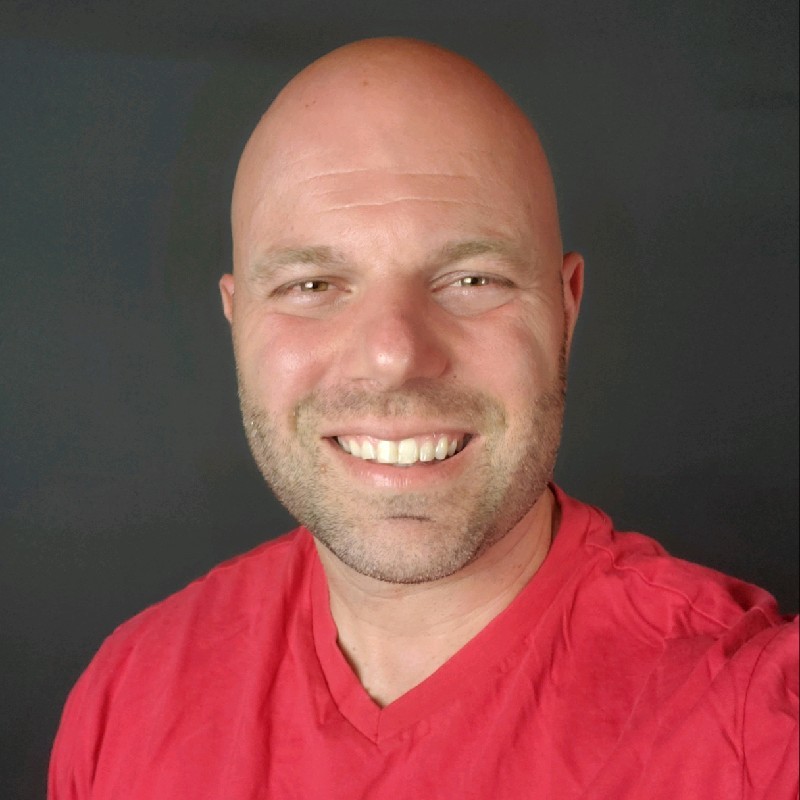
Phil Gervasi
Today's Guests
